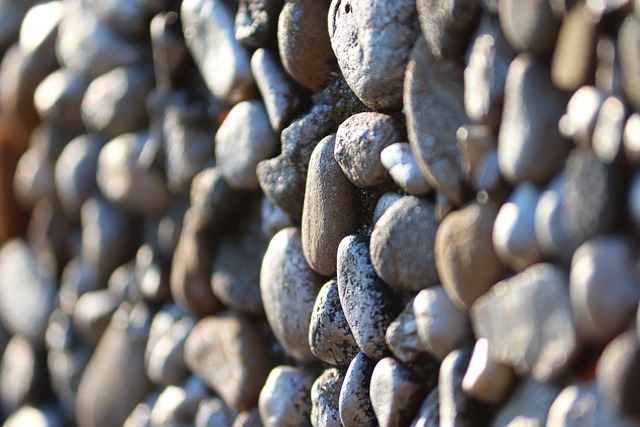
Concrete in construction
Published on
Average Read time: 2 minutes 20 seconds
Concrete is one of the most essential materials in construction, valued for its strength, durability, and versatility. It's a composite material composed of cement, water, aggregates (such as sand, gravel, or crushed stone), and often additional additives or admixtures. Here's how concrete is used in construction:
Foundations and Footings: Concrete is commonly used for building foundations and footings, providing a stable base for structures. It's poured into excavated trenches or forms and allowed to harden, creating a solid support system that distributes the weight of the building evenly to the ground.
Structural Elements: Concrete is used for a wide range of structural elements in buildings and infrastructure, including columns, beams, slabs, walls, and stairs. Reinforced concrete, which incorporates steel reinforcement bars (rebar) or mesh, offers enhanced strength and ductility, making it suitable for load-bearing applications.
Pavements and Roads: Concrete is widely used for constructing pavements, roads, highways, and bridges due to its durability and ability to withstand heavy traffic loads. Concrete pavements provide a smooth and durable surface for vehicles while requiring minimal maintenance compared to asphalt.
Precast Concrete Products: Precast concrete products are manufactured off-site in controlled factory conditions and then transported to the construction site for assembly. Examples include precast concrete panels, beams, columns, and slabs. Precast concrete offers advantages such as quality control, faster construction, and reduced labor costs.
Retaining Walls and Dams: Concrete is used for building retaining walls, which are structures designed to hold back soil or water and prevent erosion. Concrete retaining walls provide stability and support for earth embankments, highways, and landscaping features. Concrete is also used in the construction of dams and reservoirs for water storage and flood control.
Tunnels and Underground Structures: Concrete is essential for constructing tunnels, subway systems, underground parking garages, and other below-ground structures. It provides structural integrity, waterproofing, and resistance to soil pressure and groundwater infiltration.
Decorative and Architectural Elements: Concrete can be used to create decorative and architectural elements in buildings, such as exposed aggregate finishes, stamped patterns, textured surfaces, and sculptural forms. Decorative concrete techniques allow for a wide range of design options, enhancing the aesthetic appeal of structures.
Seawalls and Coastal Structures: Concrete is used for building seawalls, breakwaters, and coastal protection structures to mitigate erosion, control wave action, and protect coastal communities from storm surges and flooding. Reinforced concrete offers excellent resistance to saltwater corrosion and marine environments.
Green Building Practices: Concrete can be part of sustainable construction practices, such as using recycled aggregates or incorporating supplementary cementitious materials like fly ash or slag. Additionally, concrete's thermal mass properties can contribute to energy efficiency by moderating indoor temperatures and reducing heating and cooling demands.
Foundations and Footings: Concrete is commonly used for building foundations and footings, providing a stable base for structures. It's poured into excavated trenches or forms and allowed to harden, creating a solid support system that distributes the weight of the building evenly to the ground.
Structural Elements: Concrete is used for a wide range of structural elements in buildings and infrastructure, including columns, beams, slabs, walls, and stairs. Reinforced concrete, which incorporates steel reinforcement bars (rebar) or mesh, offers enhanced strength and ductility, making it suitable for load-bearing applications.
Pavements and Roads: Concrete is widely used for constructing pavements, roads, highways, and bridges due to its durability and ability to withstand heavy traffic loads. Concrete pavements provide a smooth and durable surface for vehicles while requiring minimal maintenance compared to asphalt.
Precast Concrete Products: Precast concrete products are manufactured off-site in controlled factory conditions and then transported to the construction site for assembly. Examples include precast concrete panels, beams, columns, and slabs. Precast concrete offers advantages such as quality control, faster construction, and reduced labor costs.
Retaining Walls and Dams: Concrete is used for building retaining walls, which are structures designed to hold back soil or water and prevent erosion. Concrete retaining walls provide stability and support for earth embankments, highways, and landscaping features. Concrete is also used in the construction of dams and reservoirs for water storage and flood control.
Tunnels and Underground Structures: Concrete is essential for constructing tunnels, subway systems, underground parking garages, and other below-ground structures. It provides structural integrity, waterproofing, and resistance to soil pressure and groundwater infiltration.
Decorative and Architectural Elements: Concrete can be used to create decorative and architectural elements in buildings, such as exposed aggregate finishes, stamped patterns, textured surfaces, and sculptural forms. Decorative concrete techniques allow for a wide range of design options, enhancing the aesthetic appeal of structures.
Seawalls and Coastal Structures: Concrete is used for building seawalls, breakwaters, and coastal protection structures to mitigate erosion, control wave action, and protect coastal communities from storm surges and flooding. Reinforced concrete offers excellent resistance to saltwater corrosion and marine environments.
Green Building Practices: Concrete can be part of sustainable construction practices, such as using recycled aggregates or incorporating supplementary cementitious materials like fly ash or slag. Additionally, concrete's thermal mass properties can contribute to energy efficiency by moderating indoor temperatures and reducing heating and cooling demands.
Concrete's versatility, durability, and adaptability make it a fundamental material in construction, supporting a wide range of applications in buildings, infrastructure, and civil engineering projects. Its continued innovation and development contribute to advancements in construction technology and sustainable building practices.